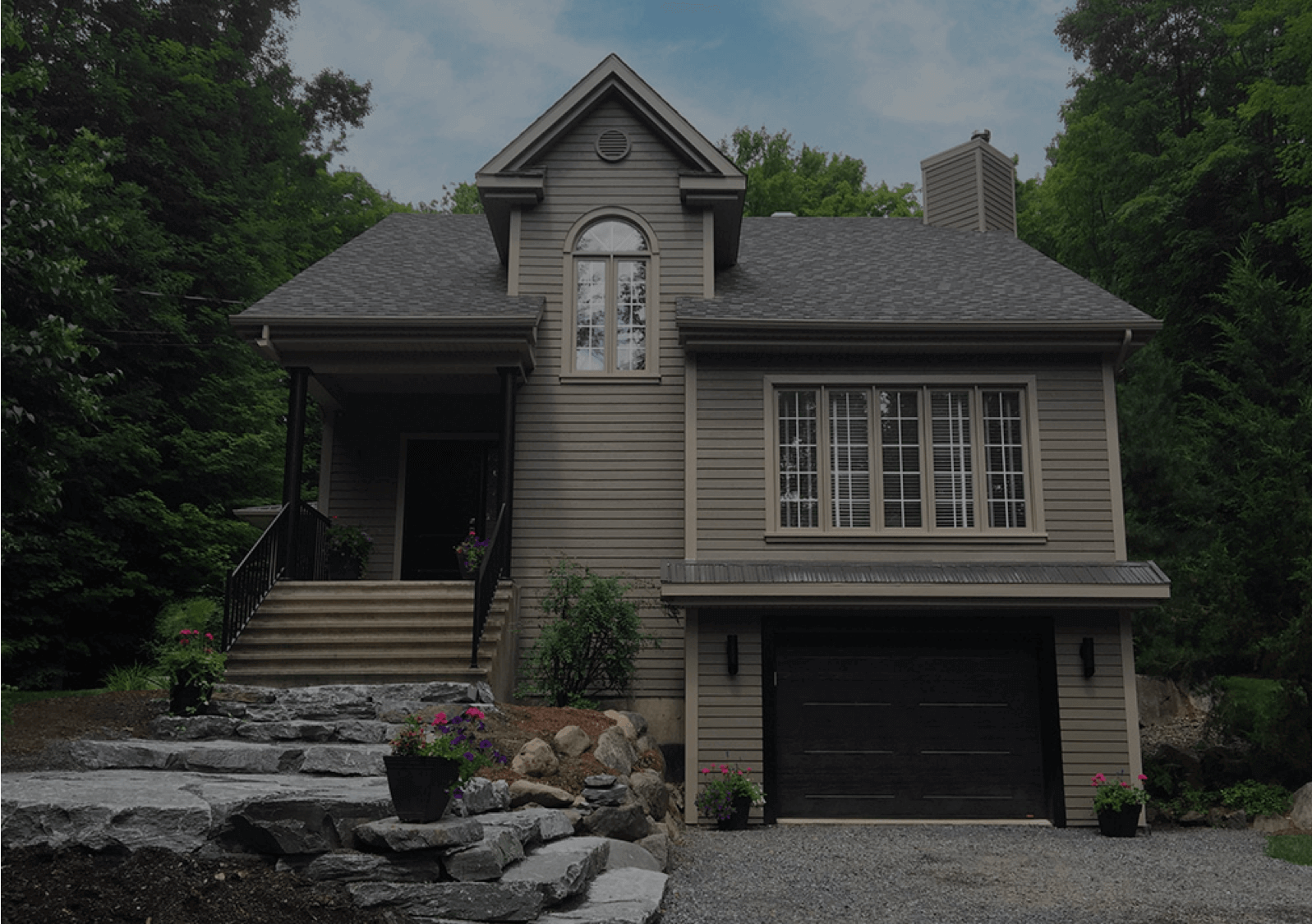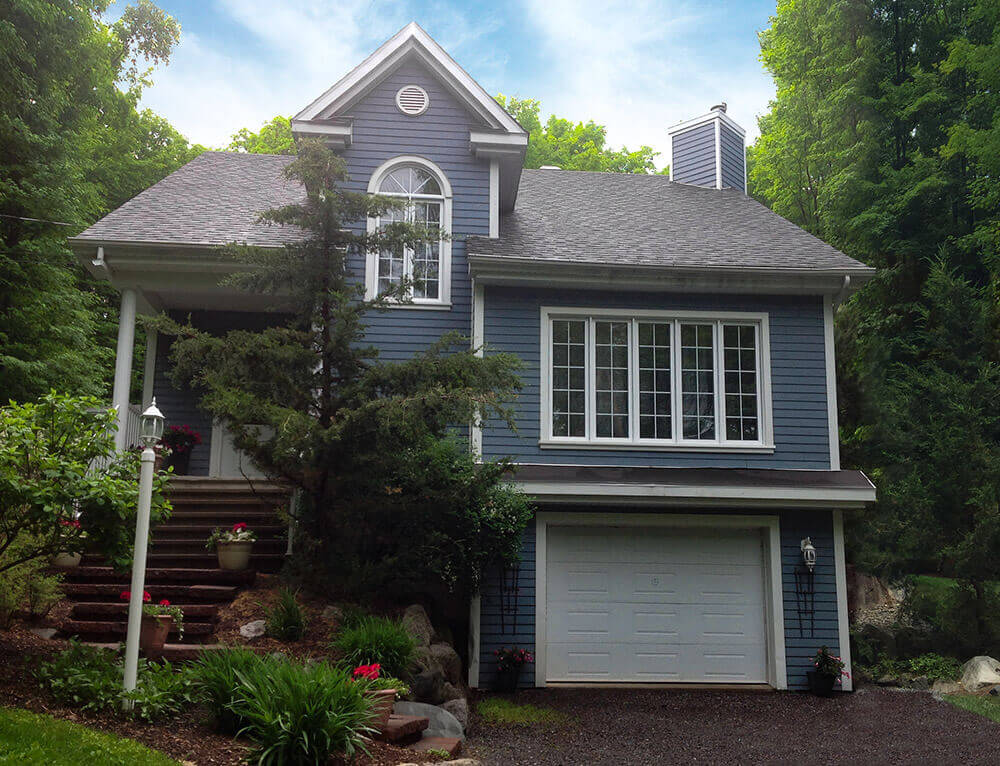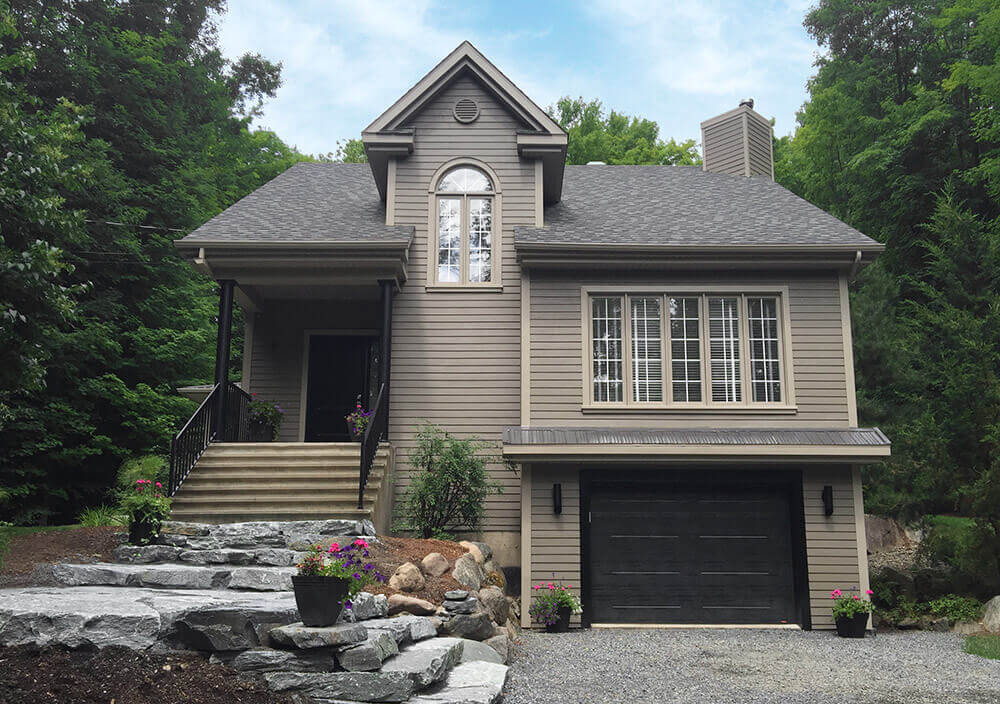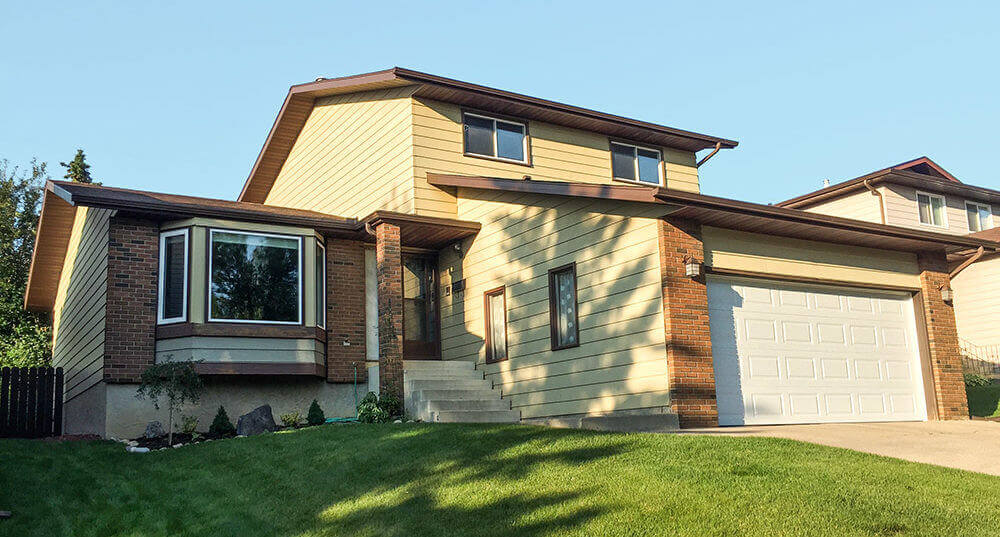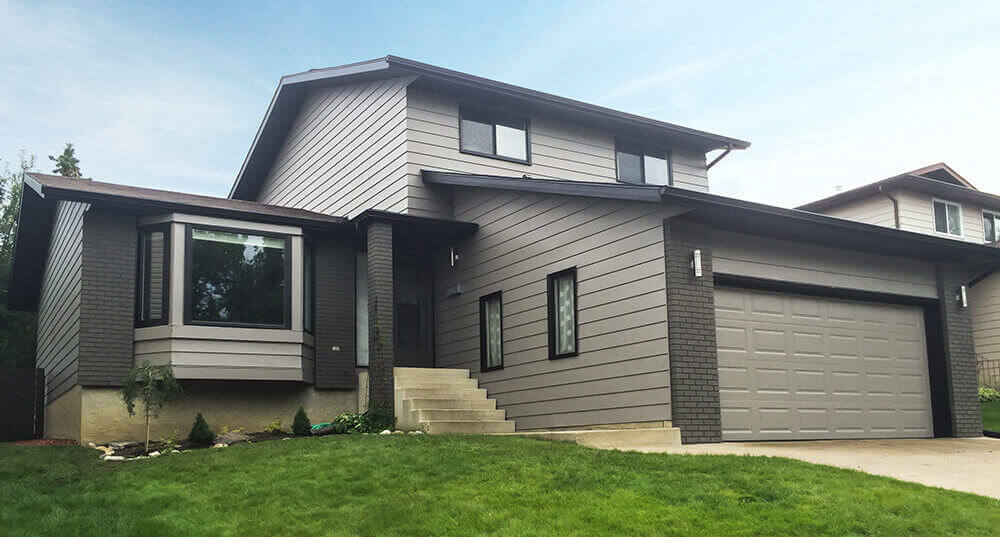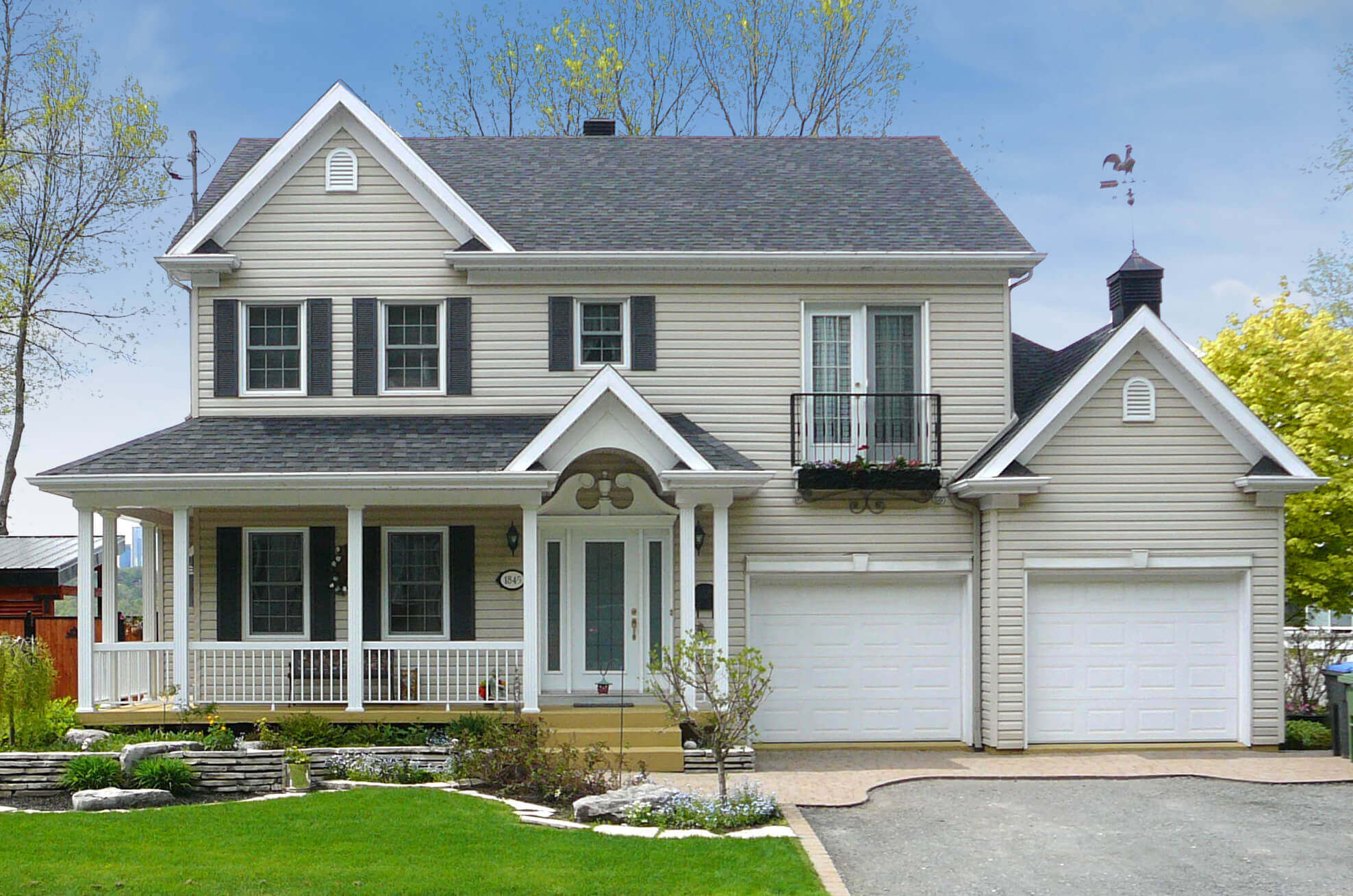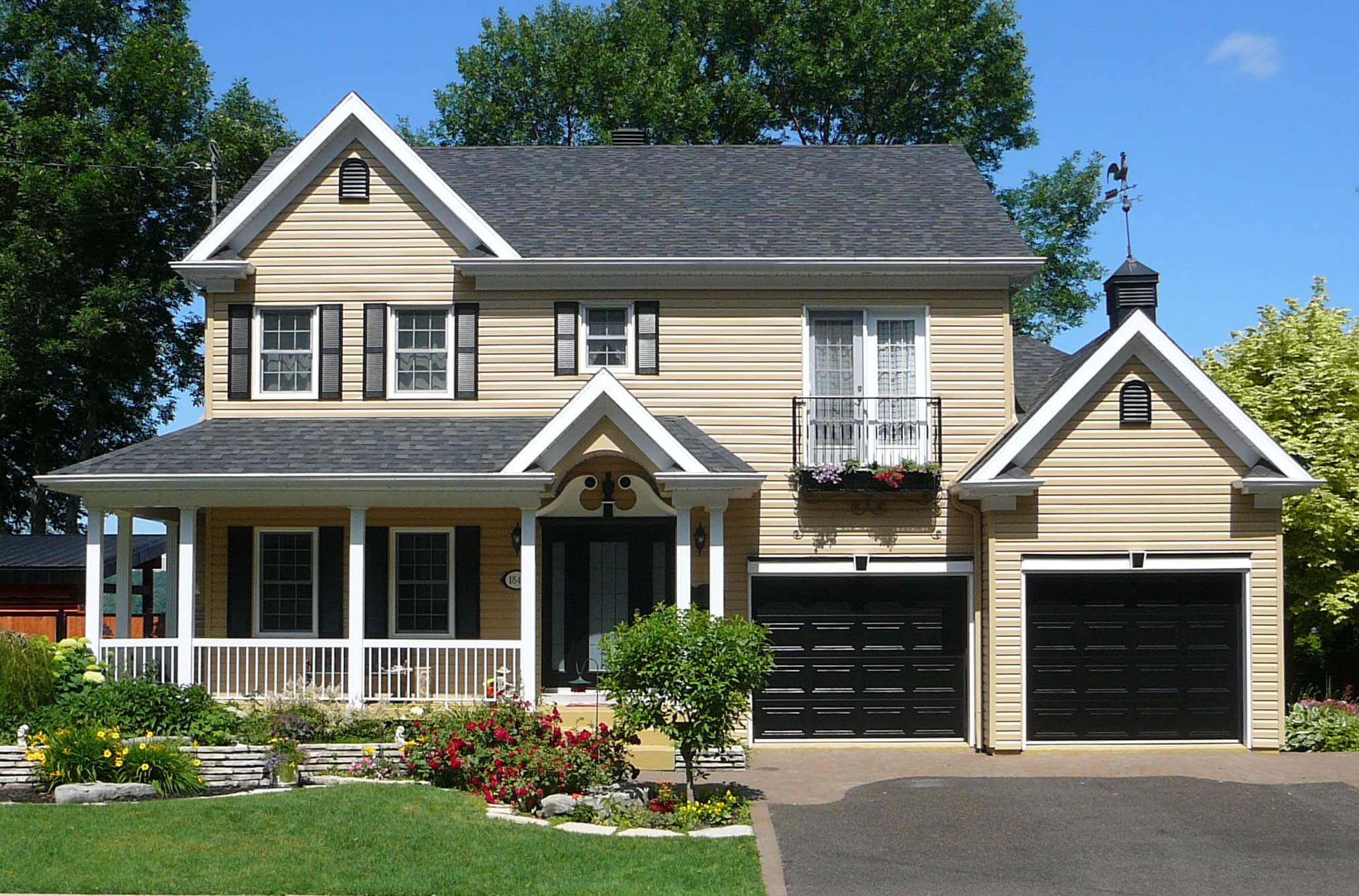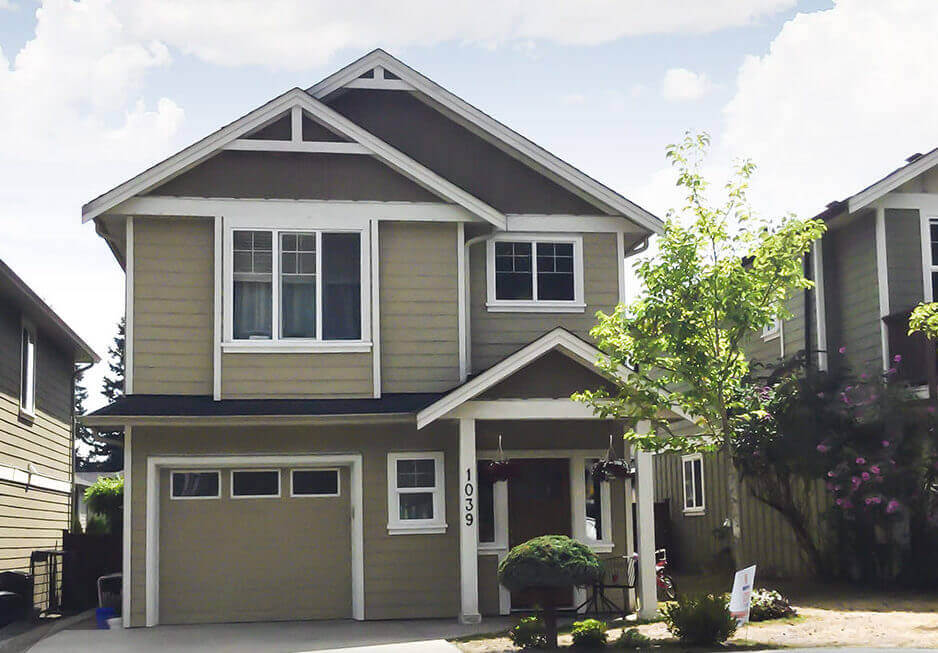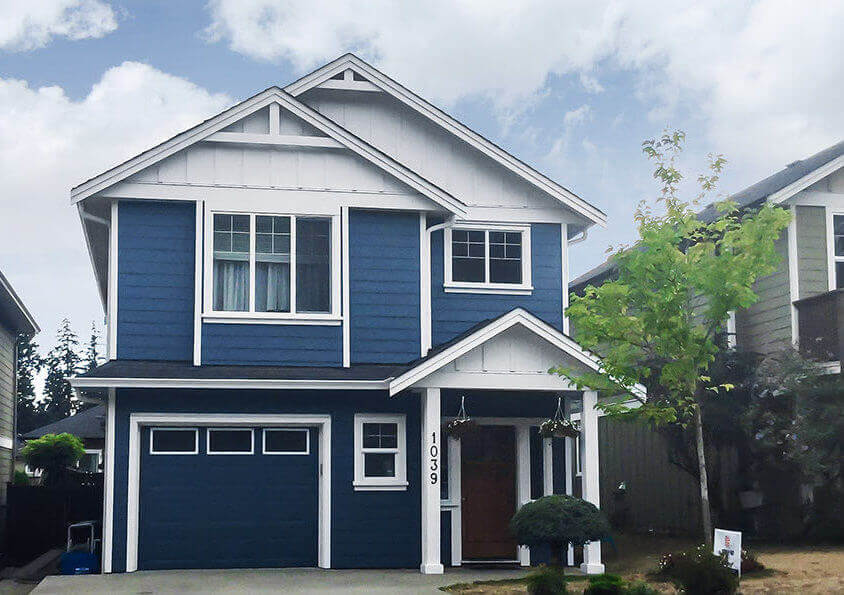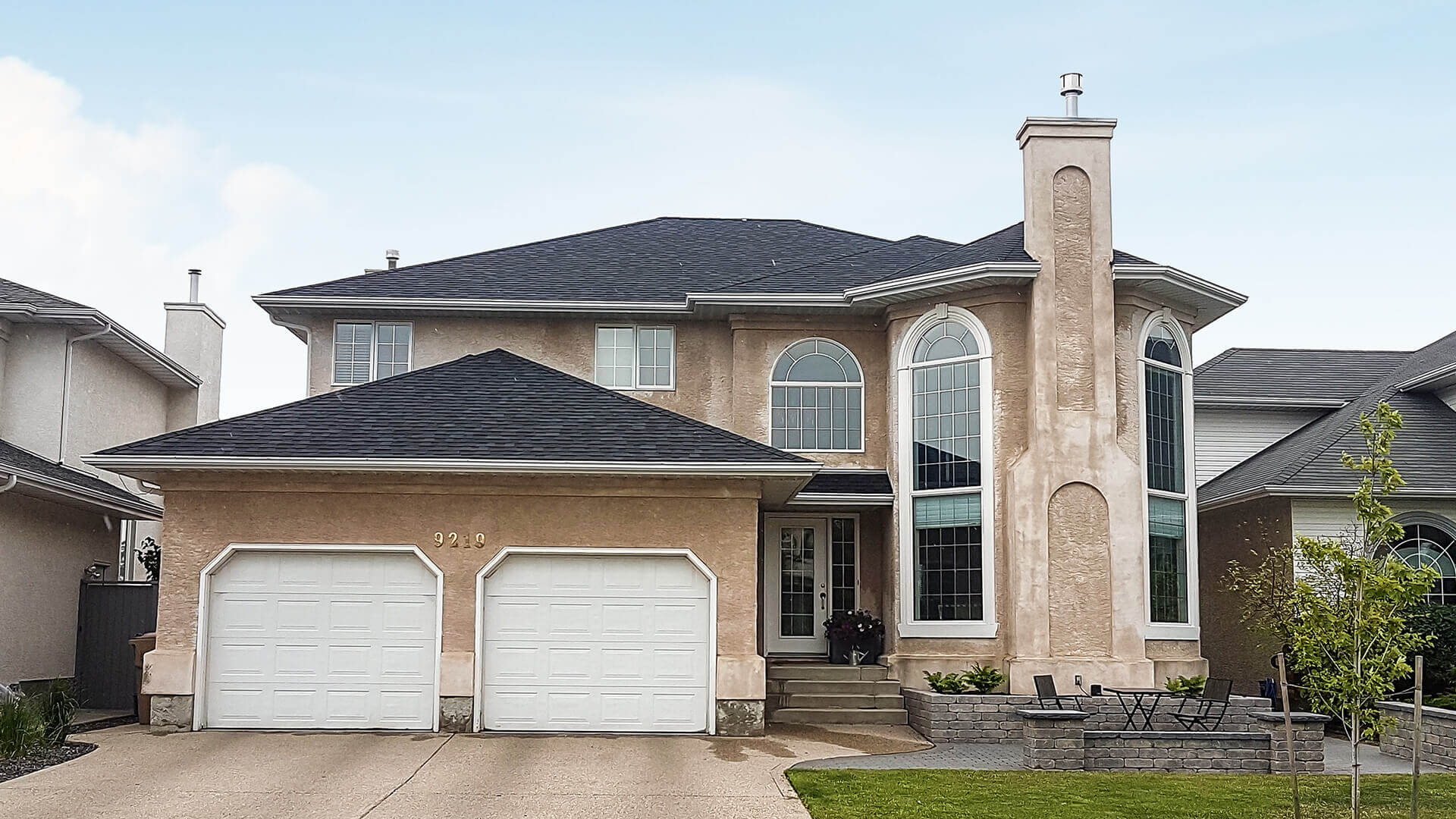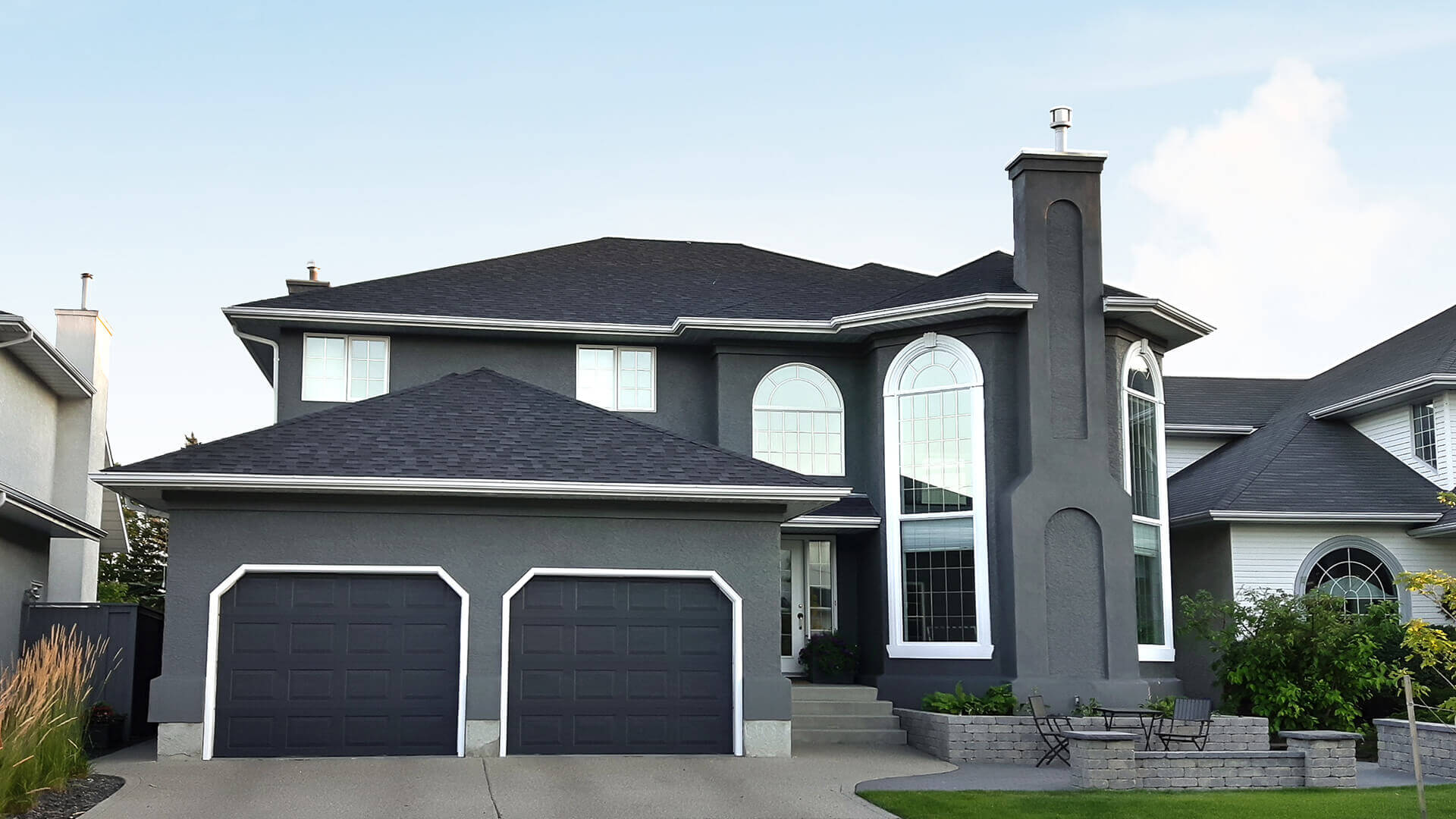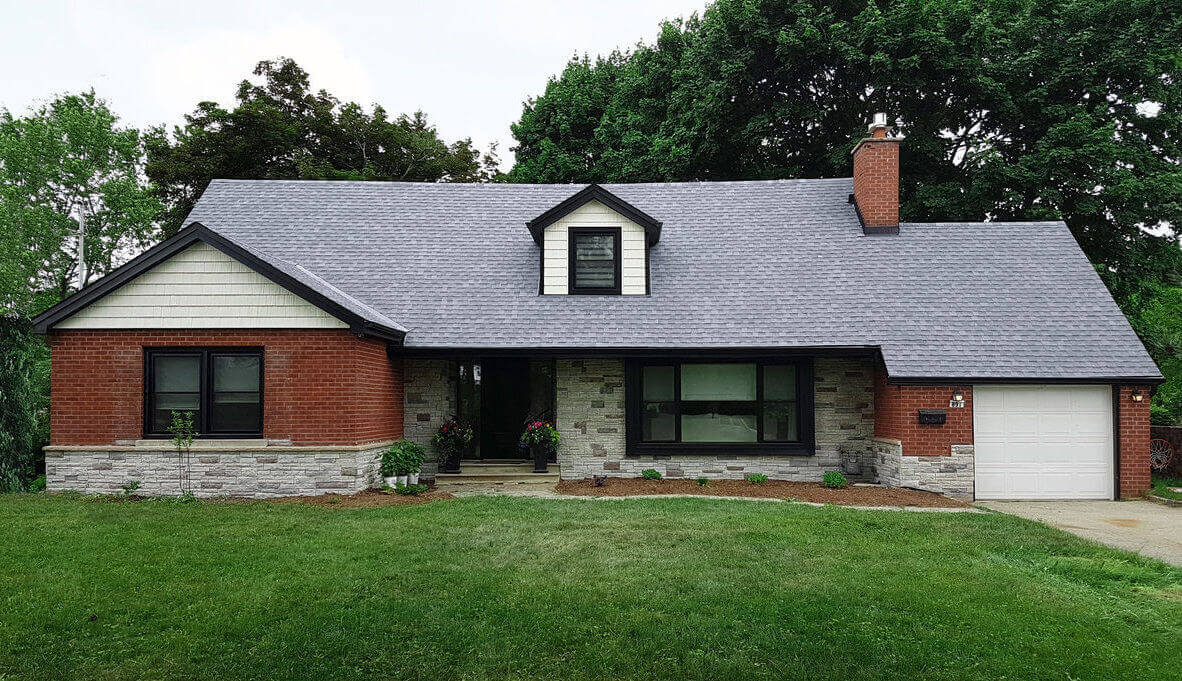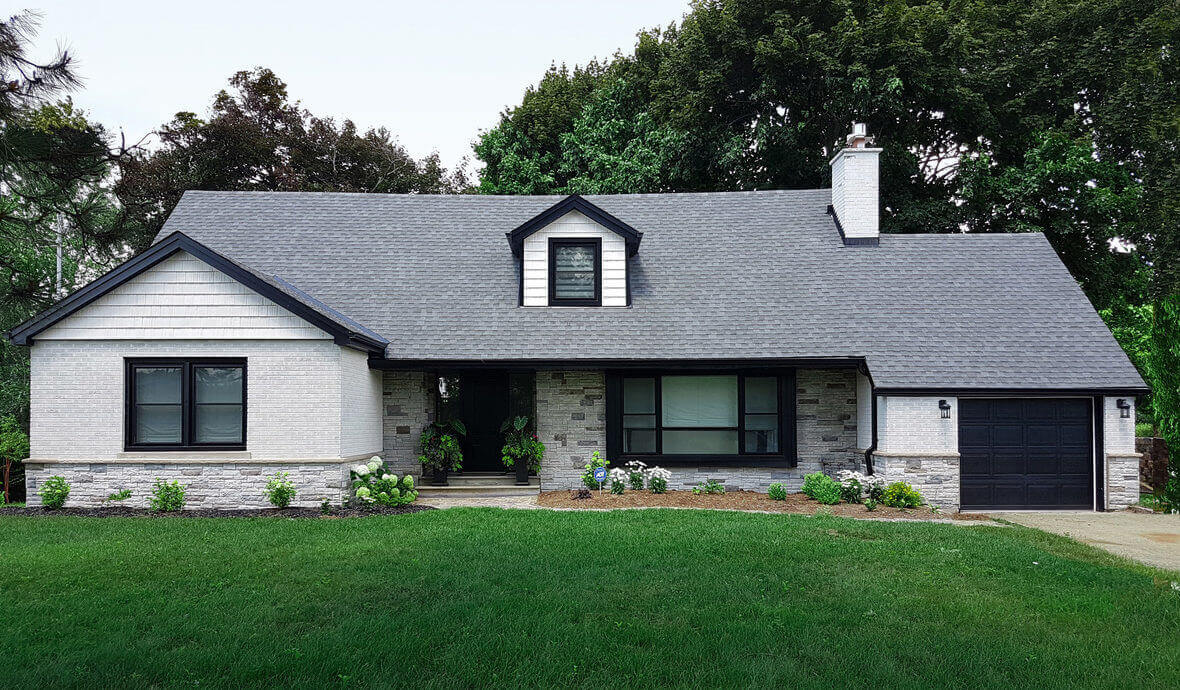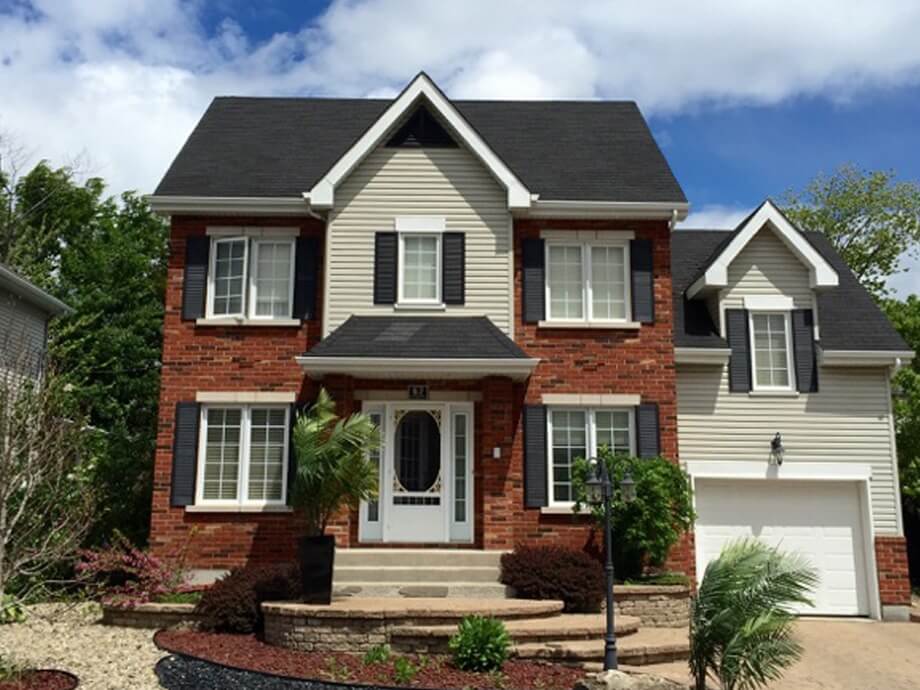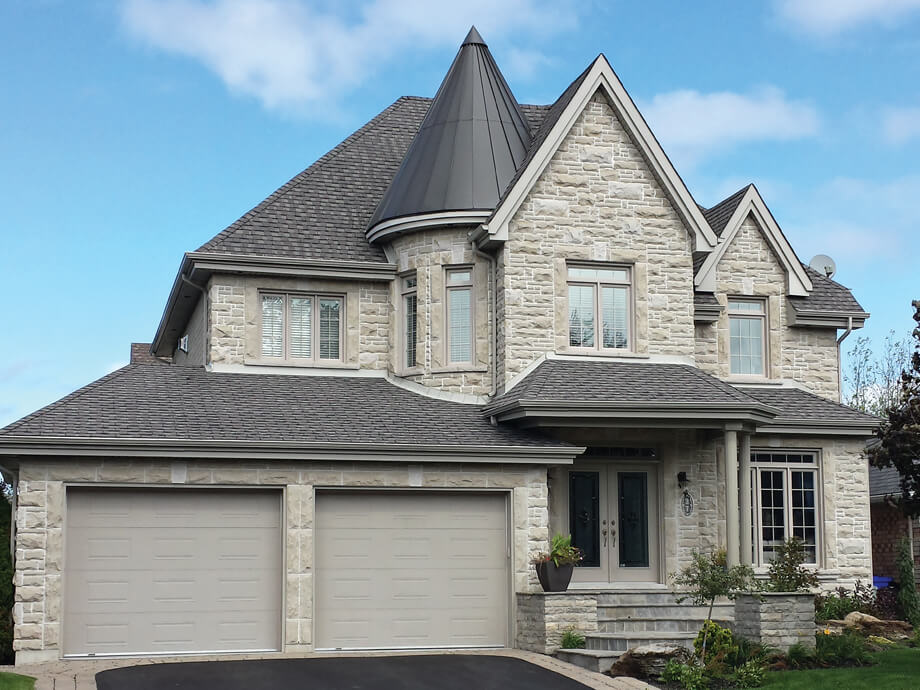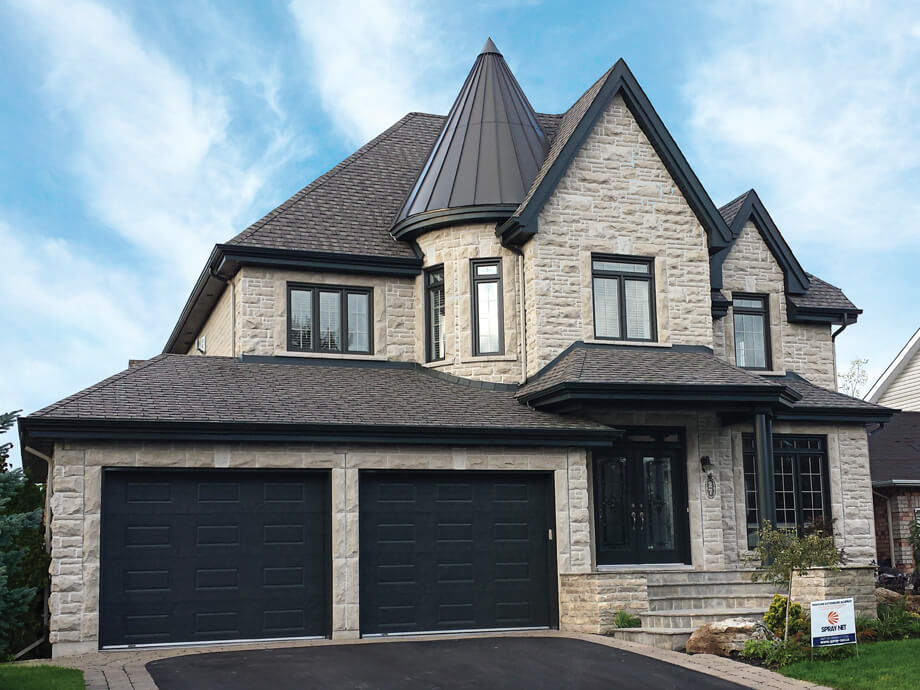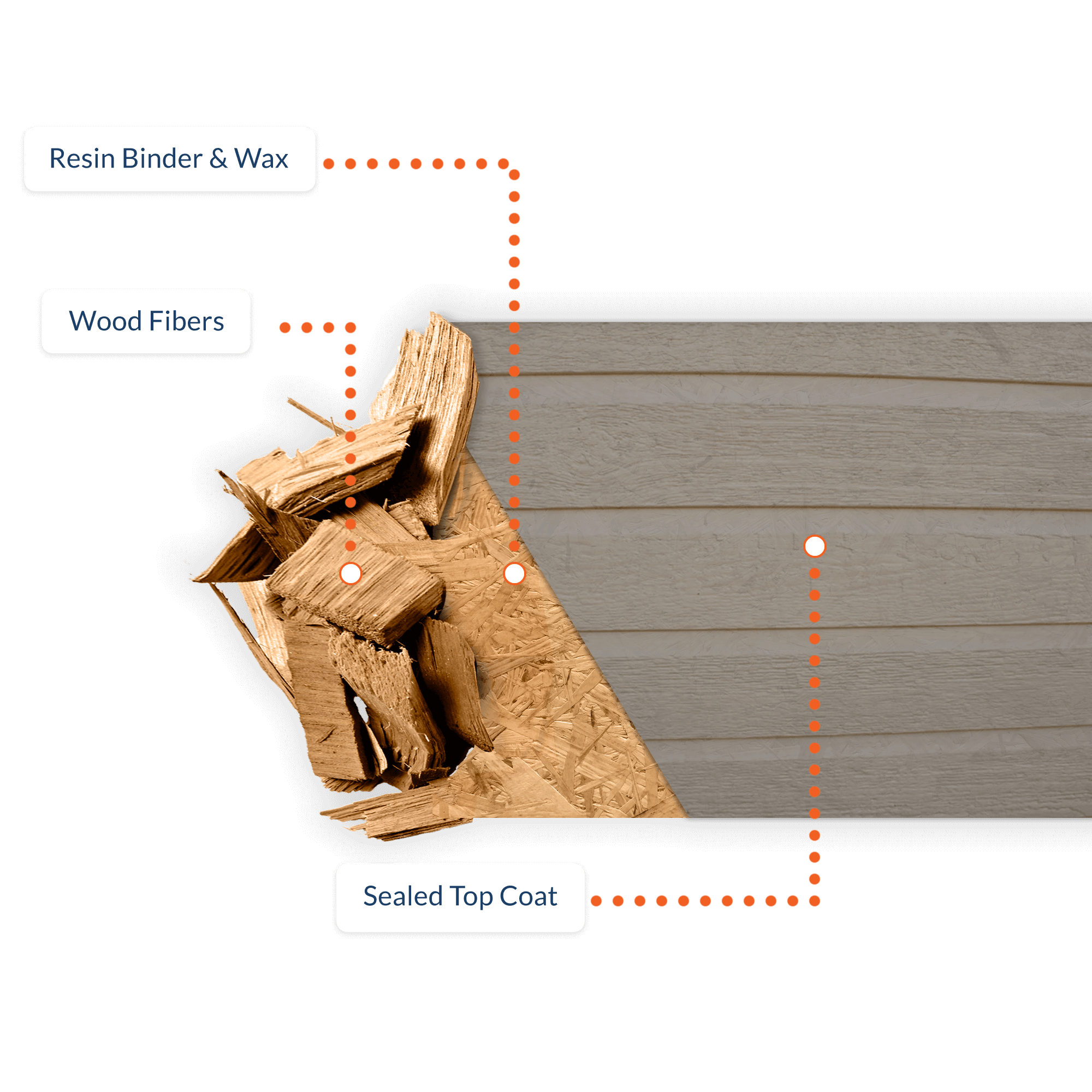
Engineered wood can still absorbs moisture, just like natural wood.
Engineered wood is made up of leftover wood fibers that have been pressed with a resin binder and wax; and then sealed with a water-resistant top coat. Once that top seal has been broken down by the elements, your engineered wood can absorb moisture and can start to act like real wood… real fast. Our paint for siding creates a tight molecular, cross-linked bond that repels water and prevents unsightly blistering.
You might need to reseal your engineered wood sooner than you thought.
Many engineered wood products come prefinished by their manufacturers using their specially-formulated coatings. Other times, the siding contractor will arrange the application of the top coat, choosing an inferior latex product to seal your siding. If you can see visible signs of coating degradation, such as premature fading, discoloration and powdering, it means it’s time to reseal and rebuild.
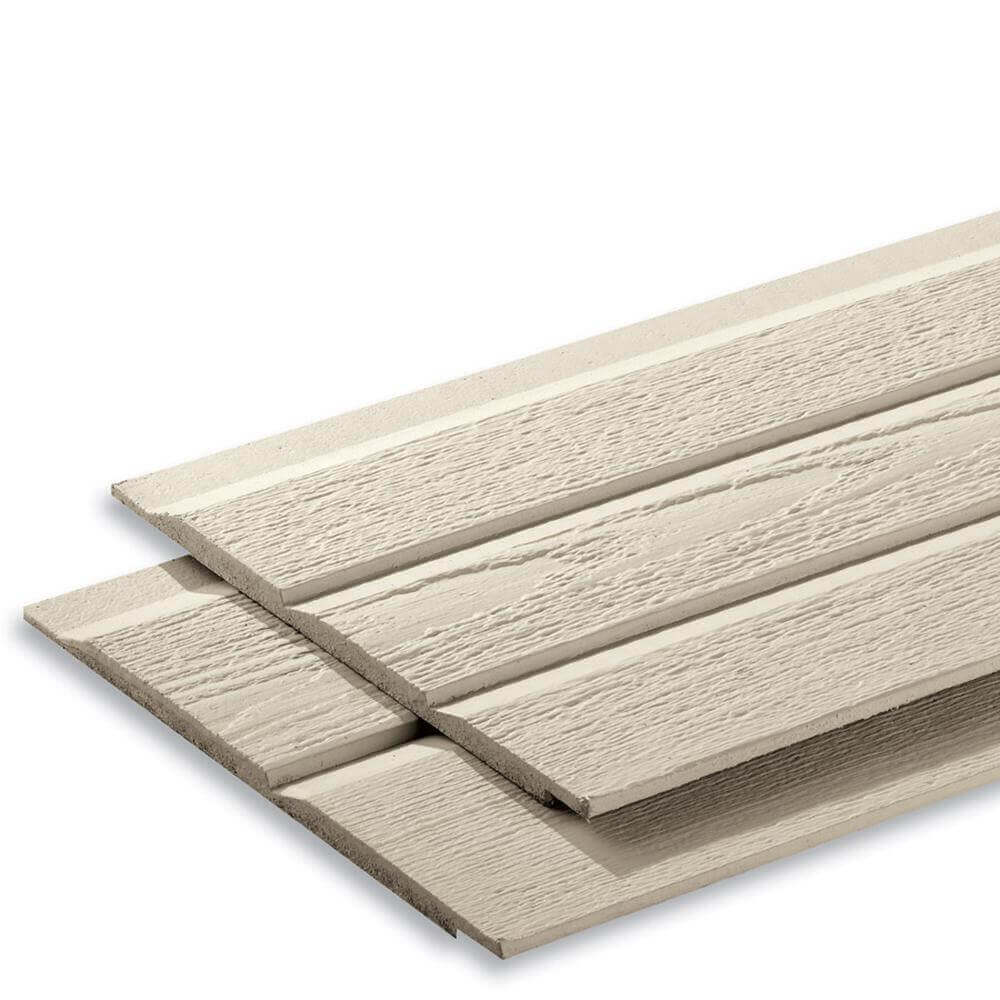
Our coating respects the beauty of your engineered wood.
Engineered wood offers the natural look of wood without all the maintenance. Our paint for siding helps rebuild the protective seal on your siding, all while leaving it’s natural, wood-grain texture in tact.
Frequently asked questions about how it works.
Why don’t you paint wood?
Wood is an organic, living material. Like all living things, organic surfaces must breathe a lot and by applying a coating over it, this breathing room will be reduced. The natural tendency for the wood to breathe and move would eventually cause the paint to chip and peel. Not to mention, there’s actually no added benefit of spraying wood since its porous nature doesn’t allow for a smooth factory finish and what we’re going for.
Finally, when we give you a quote for your project during your consultation, we give you an exact fixed price that won’t change so you can determine whether a Spray-Net revamp makes sense in terms of your budget. It is difficult to estimate how long it will take to strip wood, so we wouldn’t be able to give you a fixed and exact quote ahead of time which doesn’t coincide with our promise to you.
What types of Exterior surfaces do you paint?
We paint:
- Aluminum, fiber cement, vinyl, and engineered wood sidings
- Brick
- Stucco and aggregate
- Front and garage doors
- Windows
- Soffits, fascias, and gutters
These surfaces will be coated with paints customized according to the material and weather. The paints allow for durability, washability, UV resistance, high-traffic scratch resistance, and flexibility.
Do you offer a wide variety of colors?
We have a wide variety of colors for you to choose from, each specifically formulated for exterior use and formulated with optimal fade resistance in mind. We use a combination of the most popular standard siding and door and window colors to provide maximum durability against premature fading and discoloration, as well as to apply the finishing touch of matching-colored caulking.
Although we can match any exterior paint color you have in mind, we can’t always provide the same optimal fade resistance or a matching caulking color. Finally, we work with an experienced designer every year to help us come up with the latest color trends and ultra-stylish exterior color palettes… an added perk that our customers really appreciate!
Why can’t you paint a surface that has already been repainted?
We offer homeowners a permanent factory finish that serves as an alternative to replacement. If we can’t fulfill this promise to you, then we simply don’t take on the project. Delivering on the Spray-Net promise is very important to us. In the case of brick, if pores are already saturated with a coating, it’s virtually impossible for the brick to absorb our stain. Like stripping wood, the time needed to strip paint off aluminum and vinyl siding is indeterminate. It can actually take DAYS to completely remove several coats of paint. If a project takes days, then it’s not likely to be cost-effective.
“Just paint over it” you say? Well, if we paint over an existing coat of paint, the aggressive nature of our coatings to maximize adhesion might actually pull away at the less-resistant latex paint. If the original paint film comes off, then the outermost coat of paint (ours) would also come off with it.
How many coats of paint do you apply?
Unlike the traditional brush and roller method, spray-applied painting is measured according to paint thickness rather than the number of coats. Depending on the specific exterior coating that we’re using, paint thickness can vary between 4 and 20 mils. A thicker paint film doesn’t automatically mean it will be more durable; it all depends on what we’re trying to achieve for a final product’s properties.
You can be sure that our expert painting crews are equipped with the knowledge, products, and experience to produce a permanent factory finish… every time.
What’s the finish of your exterior paint?
For aluminum and vinyl exterior siding, we strike the perfect balance between a matte and glossy finish to minimize the appearance of surface imperfections and to create a like-new washable finish. These types of custom finishes are not available with conventional paints limited to matte, satin, or semi-gloss. For doors and windows, we follow the same gloss standards as the door and window industry so that they look like they’ve just arrived from the factory!
What kind of products do you use?
We are an eco-friendly painting company that uses our own exclusive line of low VOC, water-based, and industrial-strength exterior paints and coatings. All of our products fall under all government VOC limits. Each of our exterior and kitchen paints and coatings are uniquely tailored for each surface and for a specific method of application, and they all contain a unique blend of additives and superior inorganic pigments that allow us to achieve the desired results per surface that we’re revamping!
Since factory paint is “baked,” is your paint as scratch resistant?
When painting doors and windows for manufacturers, IR lamps are used to artificially accelerate the curing process. This specific technique is necessary since the demands of the commercial market require quick packaging and delivery of products. To bring the same one-day permanent factory results to the residential sector, we’ve formulated our exclusive paints and coatings so that they become dry to the touch within 15-30 minutes of application, depending on the weather. In a short time, the paint film achieves a factory OEM level of hardness. With the help of the sun’s natural UV rays, the paint fully cures and achieves maximum hardness and durability in the days that follow. The sun’s natural UV rays are just as effective as a forced factory cure. When needed in unideal weather conditions, however, we can produce a forced bake for front doors in our mobile spray booth, since this high-traffic surface requires a quicker full cure. Our industrial grade formulations coupled with an optimal application process is what allows our coatings to be as scratch and mar resistant as factory coatings.
What’s the difference between spray-applied paint and electrostatic paint?
Most people confuse the difference between spray-applied paint and electrostatic paint. Electrostatic paint is typically oil-based and is commonly used in the industrial sector to paint difficult to paint shapes, like cylinders. These objects need to be made of a high conducting metal such as steel. Using an electrical charge, paint is propelled toward the surface to create a perfect even finish. This isn’t necessary (or possible) in the residential sector because we use non-toxic water-based products and the surfaces that we revamp have very little to no conductivity so it wouldn’t work anyway. The water content of our products, as well as the painting of mostly non-metal surfaces, wouldn’t allow for a sufficient electrical charge. The big appeal of electrostatic painting is the low-overspray property of the technique, but all of our paints and coatings are specifically designed for spray application. Combined with our spray equipment, this technique results in a high transfer efficiency and minimal amount of overspray. When it comes to painting the exterior of a home, we’ve formulated the ideal products and have mastered the optimal techniques to deliver a like-new and durable factory finish.
Discover the benefits of our exterior painting services
We’ve made sure this is the only kind of exterior painting you’ll ever need.
Need another reason to choose Spray-Net?
Make your choice!



